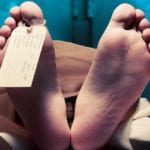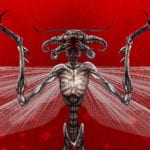 Crime
Crime  Crime
Crime  Technology
Technology 10 Hilariously Over-Engineered Solutions to Simple Problems
 Miscellaneous
Miscellaneous 10 Ironic News Stories Straight out of an Alanis Morissette Song
 Politics
Politics 10 Lesser-Known Far-Right Groups of the 21st Century
 History
History Ten Revealing Facts about Daily Domestic Life in the Old West
 Weird Stuff
Weird Stuff 10 Everyday Products Surprisingly Made by Inmates
 Movies and TV
Movies and TV 10 Actors Dragged out of Retirement for One Key Role
 Creepy
Creepy 10 Lesser-Known Shapeshifter Legends from Around the World
 Animals
Animals 10 Amazing Animal Tales from the Ancient World
 Gaming
Gaming 10 Game Characters Everyone Hated Playing
 Crime
Crime 10 Terrifying Serial Killers from Centuries Ago
 Technology
Technology 10 Hilariously Over-Engineered Solutions to Simple Problems
 Miscellaneous
Miscellaneous 10 Ironic News Stories Straight out of an Alanis Morissette Song
Who's Behind Listverse?

Jamie Frater
Head Editor
Jamie founded Listverse due to an insatiable desire to share fascinating, obscure, and bizarre facts. He has been a guest speaker on numerous national radio and television stations and is a five time published author.
More About Us Politics
Politics 10 Lesser-Known Far-Right Groups of the 21st Century
 History
History Ten Revealing Facts about Daily Domestic Life in the Old West
 Weird Stuff
Weird Stuff 10 Everyday Products Surprisingly Made by Inmates
 Movies and TV
Movies and TV 10 Actors Dragged out of Retirement for One Key Role
 Creepy
Creepy 10 Lesser-Known Shapeshifter Legends from Around the World
 Animals
Animals 10 Amazing Animal Tales from the Ancient World
 Gaming
Gaming 10 Game Characters Everyone Hated Playing
Top 10 Truly Creepy Things In Florida
“Florida man” is a meme. It refers to every déclassé and dumb (especially dumb criminals) person that has ever crawled out of the Everglades. For those addicted to the Internet, the Sunshine State is the magical place where robbers use Sharpie goatees as disguises and eight-foot-long alligators carry out impromptu home invasions.
See Also: 10 Exotic Pets That Escaped And Multiplied In The Florida Wilderness
There is more to Florida than just Florida man. The oldest city in America is St. Augustine, Florida, which was founded by Spanish settlers in September 1565. Florida, like its close historical cousin Louisiana, is also a cultural melting pot where Spanish Catholicism with African and Caribbean accents dominate in the south and center, while Anglo and Scots-Irish Protestant culture rules the north and panhandle. Ever since the real estate boom of the 1920s, Florida has also become a Yankee colony in the South, with New Englanders and Mid-Atlantic natives deciding to spend their golden years in Florida’s endless warm weather. The final element in this stew is provided by the Quebecois, who run their own trailer parks. Florida is also the state where the musical sub-genre of death metal was born, with Floridian bands like Death, Morbid Angel, Obituary, and Deicide pioneering the heavy sound in the late 1980s.
Another unique aspect of Florida is its abundance of weirdness. Florida is rife with urban legends, creepy stories, and real-life horrors. The following ten entries should convince you that Florida is one of, if not the scariest American state.
10 Interstate 4’s “Dead Zone”
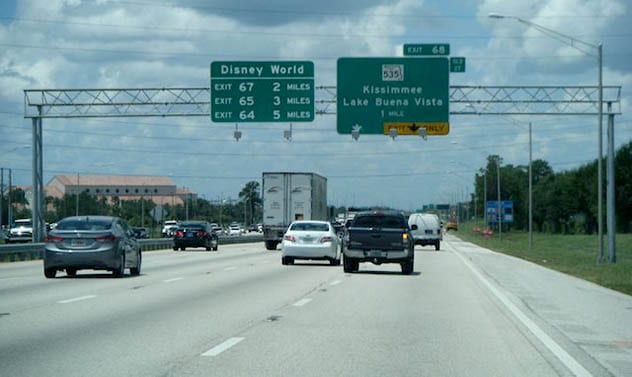
Florida is a state full of highways. No highway may be more infamous than Interstate 4. Interstate 4 runs across central Florida and links the metropolitan areas of Tampa and Daytona Beach. At the halfway point of this highway is an area known as the “Dead Zone.” The location, which is in Seminole County and at the southern end of the St. Johns River, earned its ghastly nickname because of the high number of traffic accidents that have occurred there. Few sources are in total agreement, but a ballpark figure suggests that between 1,048 and 1,740 car accidents have happened at or near the spot between 1963 and the late 1990s. More worrisome still is the fact that many of these accidents ended in fatalities.
Even before the Interstate 4 first opened its asphalt to American drivers, the area had a dark history. The Dead Zone is close to Sanford, Florida. During the Spanish conquest, the Mayaca tribe that lived in the region died out due to diseases caused by European contact. Swedish indentured servants (and some who the historical record labels as slaves) were brought in to cultivate oranges and were practically worked to death. (It is important to point out that during the 17th and 18th century, most Europeans in the South were either indentured servants or the descendants of indentured servants.) A fire eventually burnt away the entire Swedish settlement of Sanford in the mid-19th century. Sanford’s next migration wave came courtesy of Henry Sanford, who wanted Sanford to become a Catholic colony settled by German immigrants. That attempt failed thanks to an outbreak of yellow fever.
Ghost hunters and paranormal enthusiasts alike believe that all of this dark history has commingled to form a dark nexus at the Dead Zone. As such, numerous ghost sightings have been reported at the Dead Zone for decades. Many people have claimed over the years that the Dead Zone is a place where cell phones, radios, and even CBs abruptly stop working. When these electronics do work, they are often interrupted by static and the sounds of children laughing.
Other paranormal phenomena include ghost cars that are seen briefly before disappearing, fogs that appear without warning, phantom hitchhikers, and hurricanes that either upset local graveyards or follow the exact same path of destruction as previous hurricanes.
9 Koreshan State Historic Site
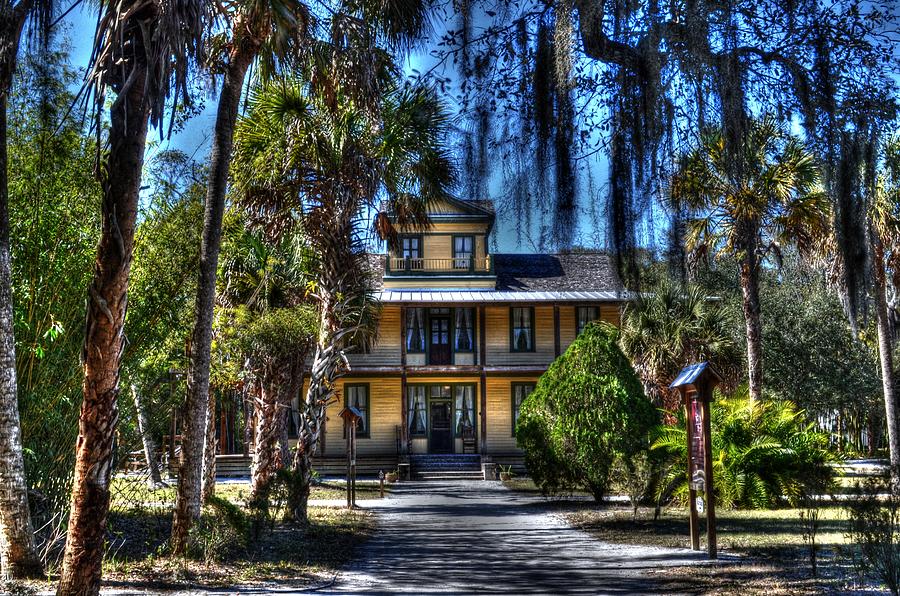
Cyrus Teed was an odd duck. Born in 1839 in Trout Creek, New York, Teed began studying medicine, alchemy, and the supernatural at an early age. After serving in the Union army during the Civil War, Teed became a medical doctor while simultaneously studying electromagnetism. At some point in the 1870s, Dr. Teed began having visions of a beautiful woman. The dream woman told Dr. Teed that humanity was in trouble, and that Teed was the man to save it. The woman also told Dr. Teed that the earth is hollow and full of electricity.
In 1878, Teed not only changed his name to Koresh (a name lifted from the Book of Isaiah), but he led a group of Shakers down to Florida in order to start his own religious community. Teed’s oddball community would not last. However, according to more than a few Floridians and tourists, Teed’s ghost and the ghosts of his followers can still be found at the Koreshan State Historic Site near Estero, Florida.
Strange winds supposedly blow through the site, with some campers claiming that the winds intentionally destroyed their tents. Other campers have said that disembodied voices and strange shadows are common inside the park or near the site (formerly the Koreshan Unity house). Ever since the death of a little girl in the 1990s, many female visitors to the park have experienced bouts of sore throat. The little girl, it is said, died after eating poison. Freakiest of all, Teed died at the Koreshan Unity commune in 1908. For days his followers sat by his bedside and waited for him to resurrect. He didn’t, and after three weeks state health officials forced the community to burn Teed’s decayed body. Teed was placed in a mausoleum by the sea. The mausoleum is gone as it was washed away by a hurricane.
8 The Deering Estate
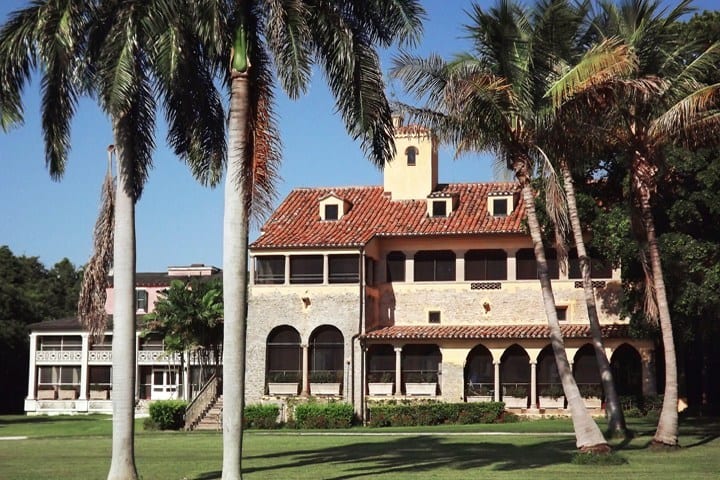
Miami is a lively place. Miami is a city synonymous with music, neon-filled night clubs, and beautiful people having fun on the beach. During the 1980s, Miami was also synonymous with murder, turf wars between Cuban and Colombian drug gangs, and race riots.
The Miami of the 1920s was not known for much besides oranges and nice weather. It was during that decade that wealthy Chicago businessman Charles Deering completed his dream mansion at the point where the Everglades and Biscayne Bay meet. Long before Deering’s arrival, the area known as Miami Rock Ridge had seen thousands of years of Native American settlement, including Paleo-Indian homes, Seminole hunting grounds, and Tequesta homes. The current haunting of the estate supposedly began when construction crews began disturbing several Native American burial grounds.
The Deering Estate is today one of the most popular destinations for professional and amateur ghost hunters alike. In 2009, Colleen Kelley and her team of paranormal researches told NPR that they had recorded some 60 different ghost voices during several tours of the mansion. P.R.I.S.M. Paranormal Research South Florida believes so much in the haunting of the Deering Estate that they, along with the estate itself, host an annual ghost hunt on the property. Given the sheer amount of ghost-themed publicity involving the Deering Estate, one should be more than a little skeptical about reports of paranormal activity.
7 The Grave of Elizabeth Budd-Graham
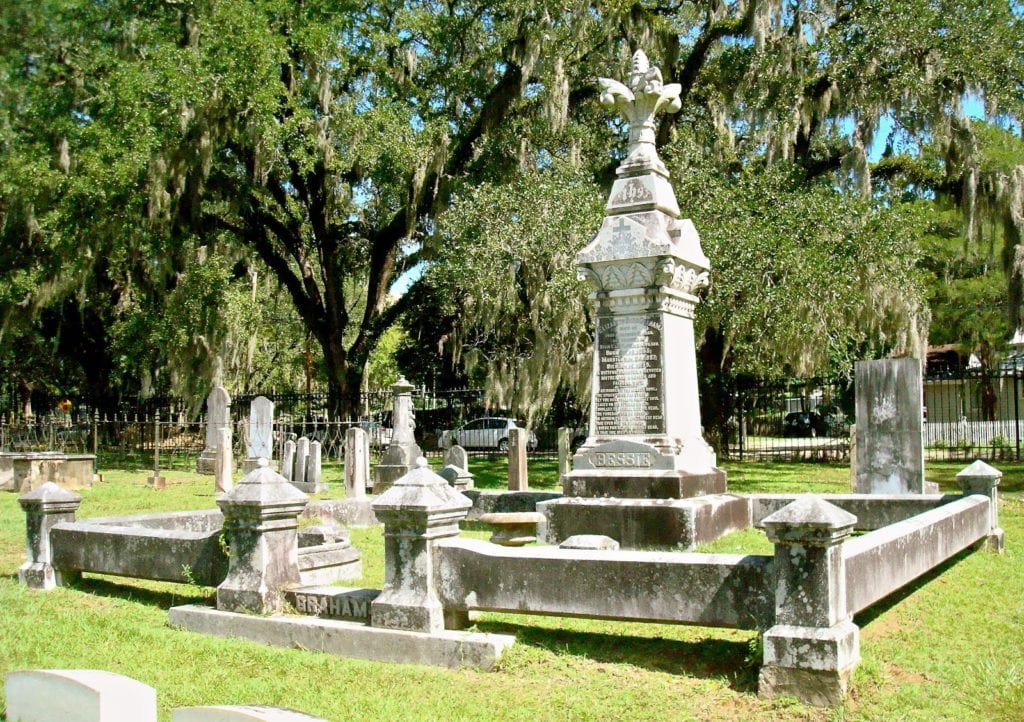
Tallahassee’s Old State Cemetery was opened in 1829. People were dying to get in, it seems. The cemetery’s most infamous occupant is Elizabeth Budd-Graham, who may be dead but, if the stories are to be believed, she is far from resting.
Contrary to Christian burial customs and unlike most of the graves in the cemetery, Elizabeth’s gravestone faces west. Its epitaph is fittingly creepy: “Ah! Broken is the golden bowl. The spirit flown forever! Let the bell toll! A saintly soul Floats on the Stygian River; Come let the burial rite be read The funeral song be sung; An anthem for the queenliest dead That died so young A dirge for her the doubly dead In that she died so young.” For those not English majors or fans of American Gothic lit, this epitaph comes directly from Edgar Allan Poe’s “Lenore”.
Local legends claim that “Bessie” was a witch who used her magic powers to make her husband fall in love with her. Besides being born during the positively supernatural month of October, Bessie, reportedly a good, or “white witch,” is also believed to have left behind several disturbing artifacts, some of which wound up around her gravestone (few sources say what these objects were). Stories have also circulated that the witches and warlocks of Tallahassee regularly perform ceremonies and rituals at Bessie’s grave.
Although most of the claims surrounding Bessie and her resting place have been refuted (for instance, plenty of other gravestones in the cemetery face westwards, and there’s nothing in Christian burial customs about western-facing gravestones being “abnormal” or “evil”), people continue to report ghostly sounds and sightings, along with the remains of real ceremonies that supposedly take place regularly near the gravestone.
6 Bloody Bucket Bridge
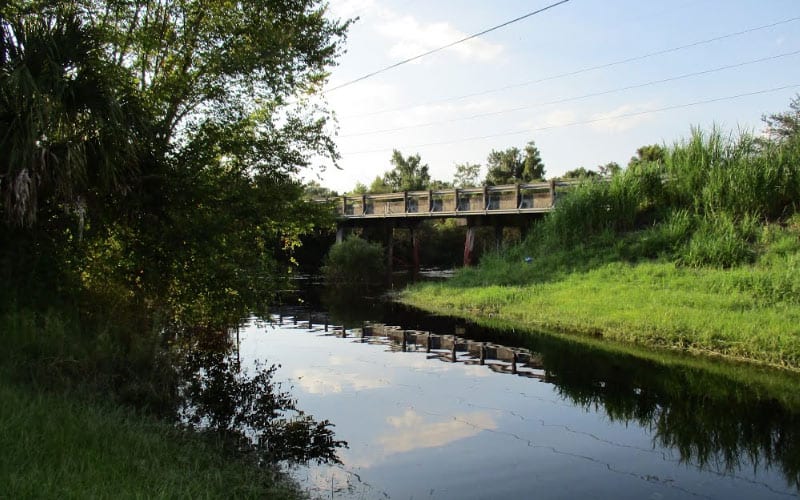
Wauchula. Bet you can’t say it right. Anyway, Wauchula, Florida is the home of the Bloody Bucket Bridge which spans across the Bloody Bucket Road. These of course are not the official names for these landmarks, but for decades, the locals of Wauchula have preferred to use “Bloody Bucket.”
Legends say that the haunting of Bloody Bucket Bridge began when a freed slave woman began working as a mid-wife after the Civil War. Different stories claim that the woman either went insane or was filled with rage because her own children had been taken away during her slave days, but either way the stories all agree that the mid-wife began murdering the children entrusted to her care. The mid-wife would suffocate the children immediately after they came into the world, and then would bury them near a local stream. The blood from the deliveries, which the mid-wife had collected in buckets, would be poured into the stream from atop the bridge, hence Bloody Bucket Bridge.
Since the 19th century, locals have passed down stories about the water under the Bloody Bucket Bridge turning red. Others claim that the wail of dying babies can be heard if one stands on the bridge. As with most legends, all of these stories cannot be verified, and the historical record says nothing about a murderous mid-wife who lived in Wauchula. Indeed, some argue that the bridge got its gruesome moniker thanks to a bar called the Bloody Bucket, which existed in Wauchula back in the 1930s and 1940s.
5 The Devil’s Chair

Cassadaga, Florida is far from normal. The town fancies itself the psychic capital of the world, and plenty of Spiritualists, mesmerists, and paranormal enthusiasts live in the town. Cassadaga was intended to be a ghostly location, as its founder, George Colby, was a Spiritualist medium originally from Pike, New York. Colby decided to form the town after meeting the spirit of a Native American man named Seneca during a séance in Iowa.
Even in Cassadaga, the Devil’s Chair stands out as unsettling. Located on Kicklighter Road inside of the Cassadaga-Lake Helen Cemetery, the Devil’s Chair is a small brick bench nestled between two gravestones. There are other such “chairs” throughout the United States, as cemeteries in the 19th century began erecting them in order to make visitors more comfortable. Cassadaga’s Devil’s Chair is known to be popular with Old Scratch, who will appear next to you if you sit in the chair long enough. Another story says that if you leave a full can of beer on the bench at dusk, it will be empty the next morning.
Since the 1970s, “legend trippers,” otherwise known as bored teenagers, have regularly dared each other to sit in the Devil’s Chair. Legend tripping activity is so high in Cassadaga that the cemetery is regularly locked up at night, with dire warnings posted all around its perimeter. All of this security has not stopped Floridians and others from hanging out by the Devil’s Chair and scaring themselves silly.
4 The Devil’s Tree
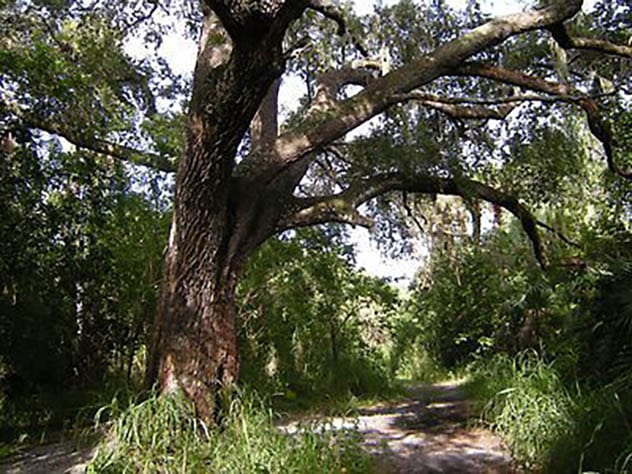
The devil loves Florida. In the balmy and beautiful coastal town of Port St. Lucie, Florida, there is a place called Oak Hammock Park. Inside of the park is a stout, but evil-looking tree that is supposedly owned by Lucifer. The greedy Lucifer likes his tree in Port St. Lucie, and therefore it is said that the tree is impossible to chop down.
A more down-to-earth, but far more horrifying backstory about the tree involves one of Florida’s many serial killers. On January 8, 1971, two teenagers were picked up by a Martin County sheriff’s deputy named Gerard John Schaefer. The teens initially trusted Schaefer because of his badge, but they shouldn’t have. Schaefer quickly took the girl’s to the wicked tree in Port St. Lucie, tied them to it, and began torturing them. Schaefer wanted them to die. He also wanted to watch them die, for the tree sat right next to Schaefer’s home. When the two hitchhikers from Iowa, Collette Goodenough and Barbara Ann Wilcox, did die, Schaefer decapitated them and had sex with their corpses.
The brilliant Schaefer (his IQ was once recorded at 130) was eventually caught in 1973, when police investigators searched his mother’s home and found personal items belonging to his victims. By January 1977, long after Schaefer had been found guilty and given two life sentences, the bones of Goodenough and Wilcox were found near the Devil’s Tree in Oak Hammock Park. Since that time, urban legends have sprung up about the Devil’s Tree in Port St. Lucie being haunted by the spirits of the dead girls, as well as the spirit of Schaefer.
3Gatorman
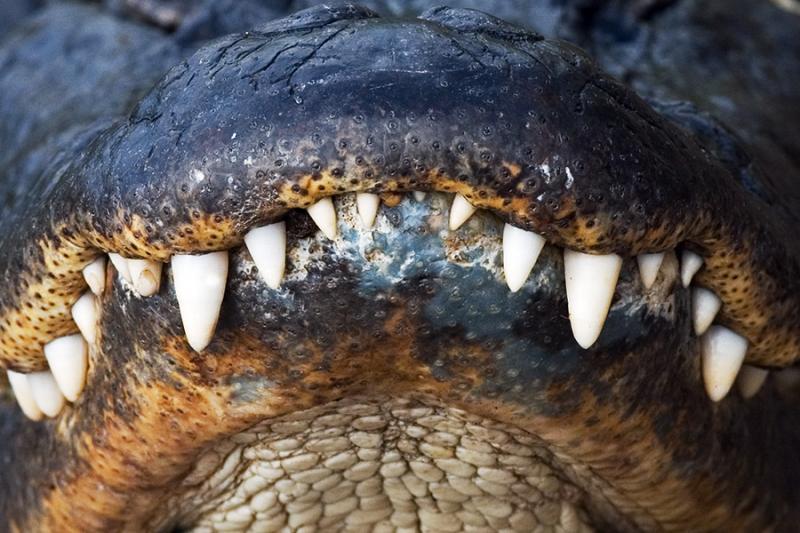
One of the most famous Floridian “cryptids” is Gatorman, a horrific monster with a man’s upper body and the lower half of a scaly fish. Like a lot of Florida’s weirdness, the story of Gatorman began in the mysterious Everglades.
According to author Greg Jenkins, when American and European settlers began moving to the Everglades in the 1840s, they were shocked by bizarre local legends about strange, bloodthirsty creatures who prowled the wetlands and swamps at night. Some of these Native American legends may or have included yarns about Gatorman, but plenty of people today believe that the Everglades could be home to several unknown species.
In Linda S. Godfrey’s “American Monsters,” a college student living near St. Johns River reported seeing the Gatorman twice between 2010 and 2011. According to this eyewitness, she first noticed huge bite marks on a manatee in 2010. The marks could not be correlated with any known animal in the Everglades. A year later, the woman saw a “blackish figure standing under some cypress trees” that emitted odd sounds and moved in such a way that the eyewitness was scared for her life.
Jenkins reports that Florida’s Gatorman is not all that unique. Besides other half-human cryptids in America like Maryland’s Goatman and West Virginia’s Mothman, he reports that New Jersey has its own Gatorman. Jenkins argues that the Florida and New Jersey cryptids are “intelligent” and operate as part of hidden communities that hunt together.
If you are wondering what Florida’s Gatorman might look like, then you you’re going to want to travel to Long Beach, Washington and check out the mummified corpse of Wellington Marsh, Jr.’s “gatorman”.
2 The Skunk Ape
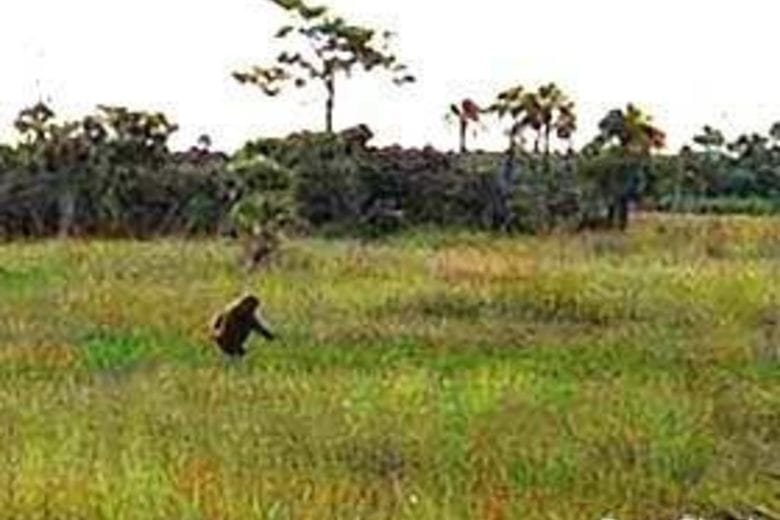
Bigfoot is known to haunt the rainy mountains of Washington and Oregon. However, Bigfoot has a Southern cousin in Florida known as the Skunk Ape. Sightings of the Skunk Ape are so common that, inside the Big Cypress National Preserve near Naples, Florida, stands the Skunk Ape Research Headquarters. The center is run by Dave Shealy, the man who has dedicated his life to proving the existence of the Skunk Ape.
The Skunk Ape reportedly makes his (or her?) home in the Everglades. The name comes from the fact that the creature exudes a noxious smell that makes any eyewitnesses gag. Shealy and other enthusiasts have compared the Skunk Ape’s terrible aroma to an alligator den “filled with swamp gas and animal cadavers”. Besides smelling awful, the Skunk Ape is also a big dude, with Shealy saying that the typical Skunk Ape stands somewhere between six and seven feet tall and weighs in excess of 450 pounds.
Like Bigfoot on the West Coast, Florida’s Skunk Ape apparently has his roots in Native American folklore. However, the modern fascination with the Skunk Ape began in 1959, when three Boy Scouts came screaming out of the Ocala National Forest. They told everyone that they had been chased out of the woods by a big, hairy, and foul-smelling ape. Later, in January 1974, the Hialeah Gardens Police Department used a helicopter to search along US Highway 27 after an eyewitness claimed to have seen a seven-foot-tall hairy ape walking near the highway. The incident earned plenty of local coverage, especially since one of the responding officers claimed that he saw the creature too.
There is very little hard evidence of the Skunk Ape’s existence. The most famous piece of evidence is a blurry and disturbing picture of some ugly simian stalking through the Florida nighttime.
1 The Chi Omega House
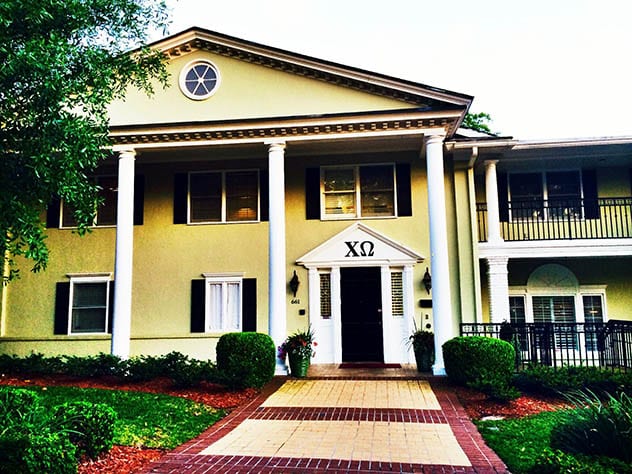
What happened at Florida State University’s Chi Omega House on the night of January 15, 1978 was a horror movie come to life. Tallahassee has never been the same.
During the early morning hours, an intruder used a faulty lock located at the rear of the house. At approximately 2:45 am, the killer entered the sorority house. His first move was to pick up a piece firewood and use it to bludgeon 21-year-old Margaret Bowman until she was unconscious. The killer ended Bowman’s life by using nylon stockings to strangle her.
The unseen and unheard intruder next entered a room belonging to 20-year-old Lisa Levy. Levy was attacked, and the killer amped up the molestation and mutilation. He bit off Levy’s nipples, bit her buttocks, and raped her with a hair spray bottle. Like Bowman, Levy died after being strangled by the killer.
There were other coeds in the house that night. None of them heard a thing. FSU student Kathy Kleiner slept through the two attacks, despite the fact that her next door neighbor was Lisa Levy. When the killer entered Kleiner’s room, he broke her jaw and left scars across her torso, but Kleiner managed to survive. Another girl, Karen Chandler, also suffered a broken jaw, broken teeth, and broken fingers after the man assaulted her. Again, despite these injuries, Chandler lived through it all. Homicide investigators later determine that all four of these attacks occurred in a span of about fifteen minutes.
After leaving the Chi Omega House and escaping into the night, the killer traveled eight blocks and broke into the basement apartment belonging to FSU coed Cheryl Thomas. The sleeping Thomas ultimately suffered a jaw fracture and skull fractures that caused permanent deafness. At the scene, the killer left behind a semen stain and a makeshift mask made out of women’s pantyhose. Inside the mask police found several male hair samples. The hairs belonged to escaped convict from Colorado named Ted Bundy.
Visitors and former students claim that the ghosts of the murdered girls are still present at the Chi Omega House. The survivors of Bundy’s night attack have also claimed that they felt inexplicable forces telling them to stay in their rooms.
For more lists like this, check out 10 Most Thrilling Adventures Of Florida Man, and 10 Strange Things Everyone Should Know About Vermont.





